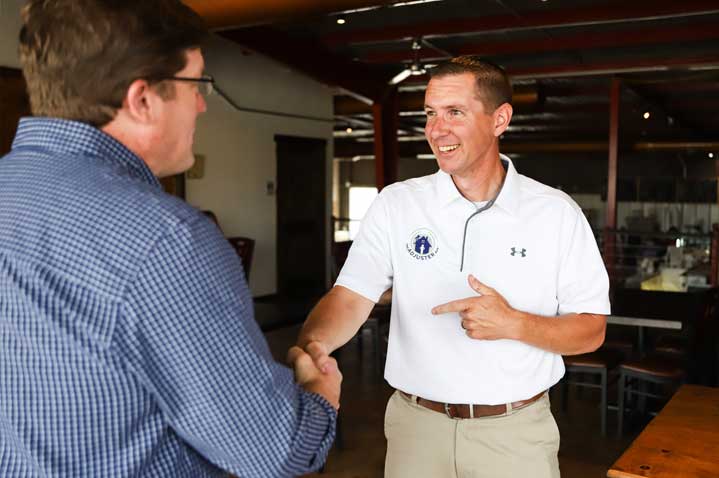If you are wanting to become an adjuster, you need to know the difference between the different types of adjusters and how they are paid. Overall, there are three different types of adjusters: Independent adjusters, staff adjusters, and public adjusters. Each adjuster title has the same job, but a different way in which they are paid.
In this article, we will break down the different ways independent adjusters are paid. An independent adjuster has three options of payments: fee schedule, day rate, or hourly rate. No matter which way you are paid, you will make money. New adjusters should try each different way to be paid to find which way they prefer.
What is a fee schedule?
A fee schedule is the first, and most common, way independent adjusters are paid.
A fee schedule is a ladder scale, basically, of dollar amounts that they charge a base—it stipulates a base service fee by bracket, based on an amount of loss on a claim.
This means that as the damages on the claim rise, the amount an adjuster will be paid will rise with it. However, each new rung in the latter, so to speak, is a set dollar amount range for the damage.
For example, the claim will pay x-amount of dollars from 0 to 5,000 dollars in damages on a claim. Then the next bracket will be from 5,000 to 9,999 would be an x-amount of dollars in the base fee. And then just a ladder scale going up. So the higher the dollar amount is on the claim, the higher your base fee gets within these brackets—usually in 5 to 10 thousand dollar brackets.
Once you have written your estimate and found the damage amount, you can look at the ladder brackets your carrier has set and that’s how much you will be paid at a base fee.
This base fee does not include additional fees. If your carrier pays mileage, your mileage will be added to this base fee. In addition, if your carrier does two-story steep, rope and harness, or any other additional fees, these will be added on top of the base fee schedule.
You have to complete the claim in order to be paid.
Most adjusters like this form of payment because they know what they are going to be paid before they go do it, typically. However, the stress to complete the claims is higher.
What is a day rate?
The second most common and used form of payment for Independent Adjusters is day-rate.
Day rate is a negotiation—or the carrier tells you what they’re willing to pay per day to go to a location. That day rate is what they pay you, before taxes, and you are still responsible to cover all your own expenses to do everything you need to do on that site.
With day rate, you’re going to have a set amount of claims that you are required to do. The carrier will usually want to see two to three claims completed a day. Despite how much those claims would pay on a fee schedule, you are only paid per day–not per claim.
Most of the time, this form of payment is from the daily zones. You will usually sit in one spot and work for however many weeks and are paid seven days a week unless stipulated otherwise by the carrier.
What is an hourly rate?
The third, and only other way, to be paid for a claim is an hourly rate. Depending on your qualifications and level of adjusting will depend on how much you are paid an hour.
An hourly rate typically only falls with commercial division claims. Commercial doesn’t necessarily mean skyscrapers and shopping malls. It could mean anywhere from farm property to a subway to somebody that just lives outside the general area of the normal populace and their property is outside the fire-coded areas—so they have to put them on a commercial policy in order to get the coverage that they need.
What the adjusters do is work from an hourly rate, which says: if you’re an adjuster, you get this much per hour to handle that claim; if you’re a GA—a general adjuster—you get this much per hour. Based on rank and qualifications, you can get paid more for taking those claims.
The carriers won’t pay for hotels, but they will pay you mileage, drive-time, and all the time it takes to do the claim.
While doing the claim, keep a logbook and fill out a timesheet. By keeping records of the hours you have invested into the claim, you will be able to justly charge the carrier for your time.
The reason they pay an hourly rate is because commercial claims are usually very time-consuming, the file requirements are a lot more, and the expected knowledge is a lot more because you are dealing with components that not every residential home has.
It takes a long time. There are a lot of requirements that are untypical to residential that you would have to do in the commercial division claims that take time to do, so they pay on an hourly basis versus a set amount of money.
While the stress to complete commercial claims isn’t as high as fee schedule claims because of the slower pace, you can make just as much either way you do it.
Conclusion
No matter which way you are paid, you are going to make money as an independent adjuster. Try out every form of payment. See which ways you prefer and work better with—find your niche. But just know, if a carrier asks you to work, take the job! You’re going to make money!










